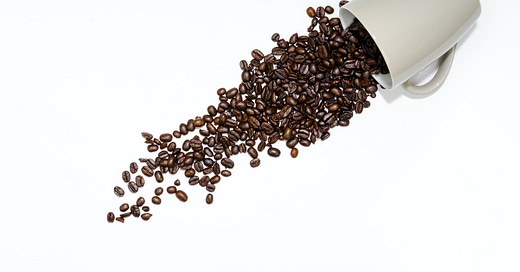Looking at the lore regarding coffee and artistry – Beethoven’s 60 beans to a cup, Voltaire’s reported 50-cup-a-day habit, Balzac’s increasingly intense intake, culminating in pulverising the beans and consuming the dry powder – it would appear that coffee, or caffeine, is an important part of the creative process. But is this the case? How does caffeine affect creativity?
While we know a lot about how caffeine affects the body, there’s surprisingly little research on whether it plays a role in promoting creativity. There may be a few reasons for this. Firstly, creativity – often described as the ability to generate new ideas and solve problems – is a complex phenomenon that’s difficult to study in the lab.
Then there’s the problem of finding the right test subjects. Many of us have a physical dependence on caffeine (it’s a drug, after all). To avoid any dodgy results brought about by withdrawal symptoms, a fair test would require subjects who hadn’t touched the stuff for at least a couple of weeks.
What do we know about caffeine? It’s a rapidly absorbed molecule, reaching every cell of our bodies within about an hour of ingestion, that stops adenosine – which makes us sleepy – from binding to receptors in the brain. Along with other mechanisms, this makes us more alert, vigilant, and better able to focus on the task at hand.
Are these effects conducive to creativity? Well, it depends on what stage of the process you’re thinking about.
For generating ideas, it’s a lack of focus that can be beneficial – one study has found that multitaskers produce more ideas than those focused on a single task, and that their ideas were more novel. However, for bringing the work to fruition – often the most challenging part of the creative process – the more focused mindset activated by your caffeinated beverage of choice can help you get the job done.
reading list
Scientists are still trying to explain how cats survive falls from great heights. Phwoar, check out the rings on Neptune. Why some toys – Rubik’s Cubes, Lego – tend to stand the test of time (it’s not just nostalgia). What is this ability to effortlessly track our daily step count/reading habits/musical tastes doing for us? That time sliced bread was banned in the US.
something to chew on
These two people of note were born on the same day in 1809. Their portraits have been carried by millions over the years; one in their native country since 1909, and the other in theirs from 2000 to 2018. Who are they?
The answer to last week’s teaser was – appropriately enough – a freshly brewed cup of coffee. In 2015, the International Space Station received an espresso machine designed to work in microgravity. Its name? ISSpresso, of course.
a thought
“There is ecstasy in paying attention.”
Anne Lamott, author




